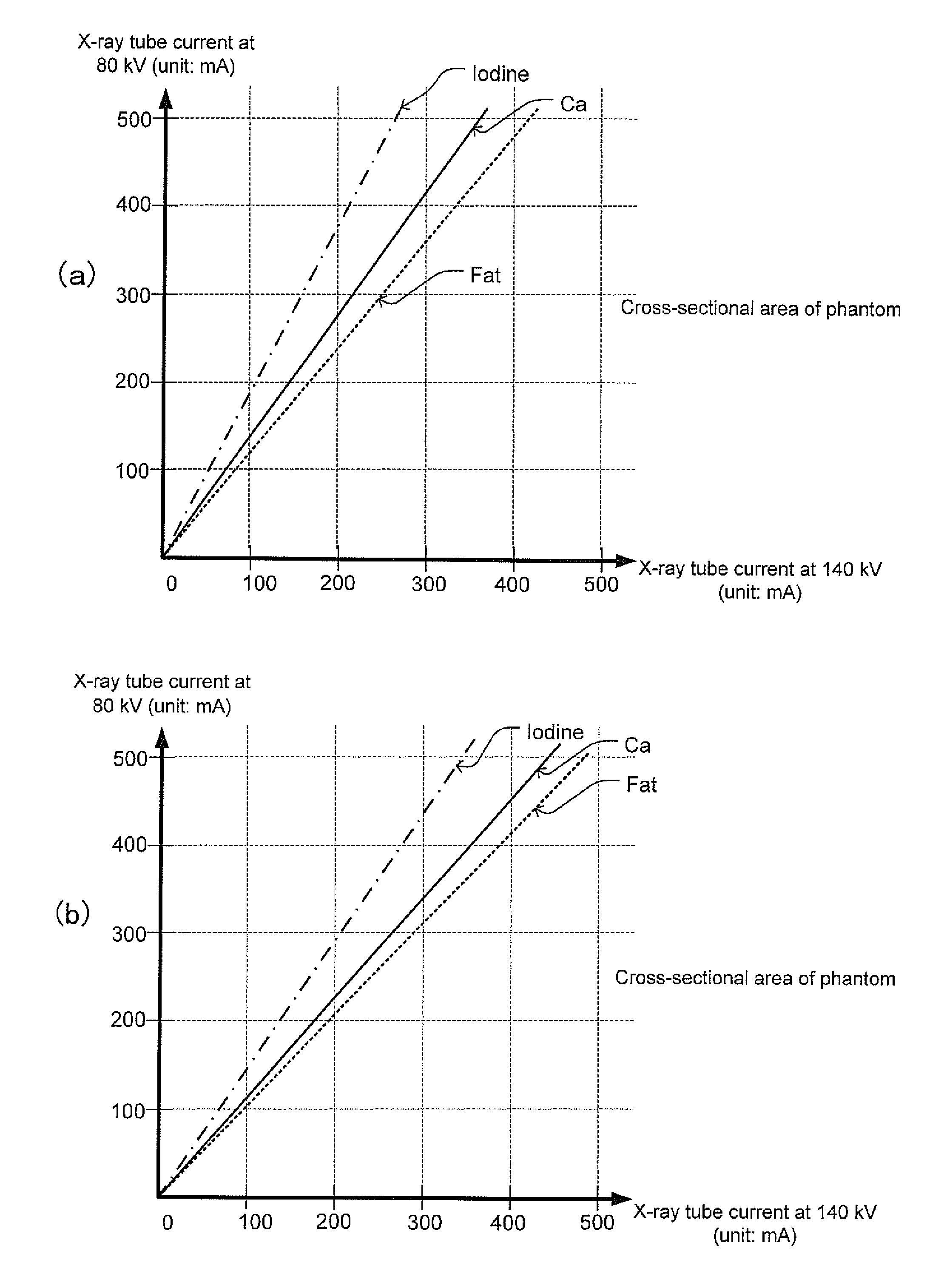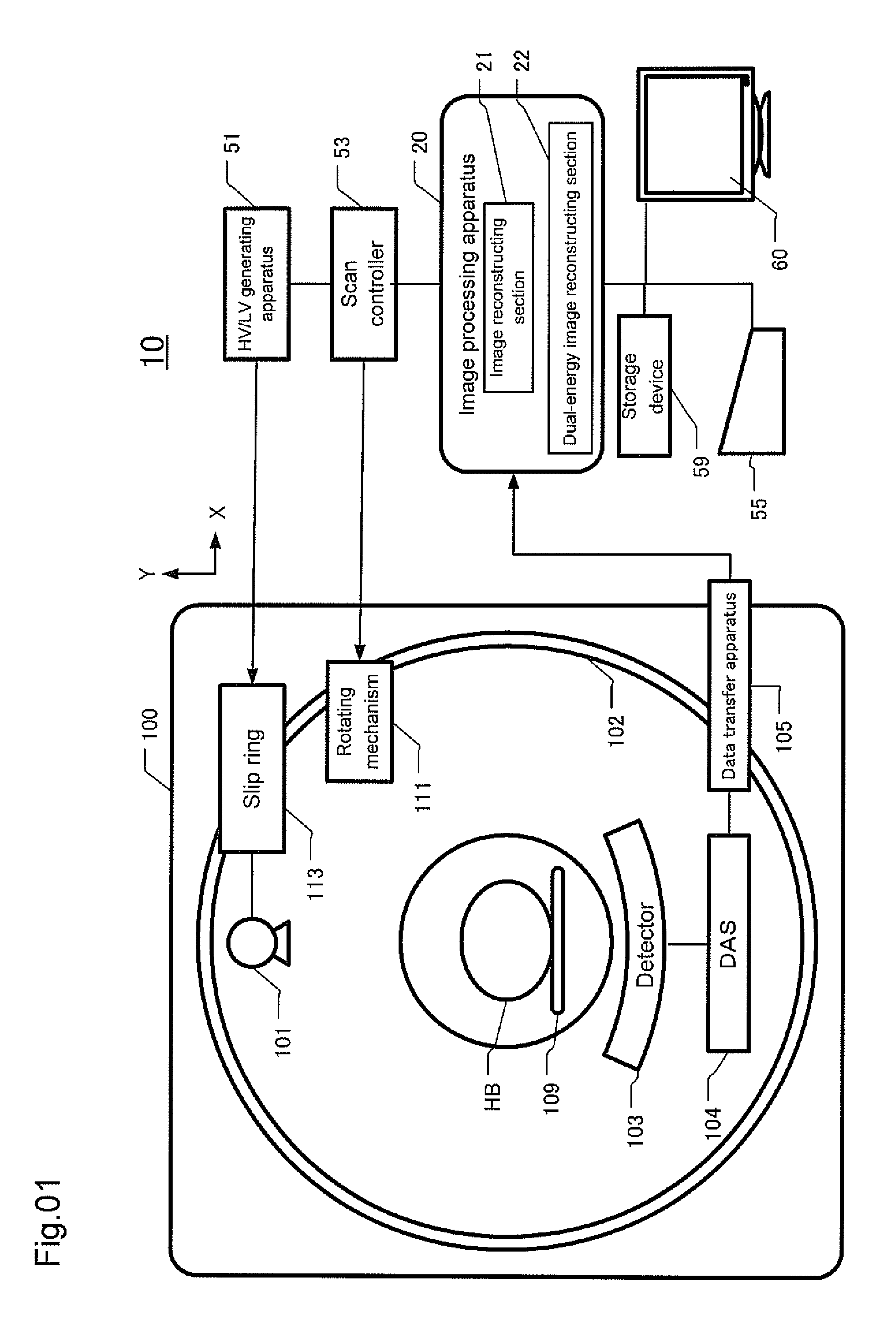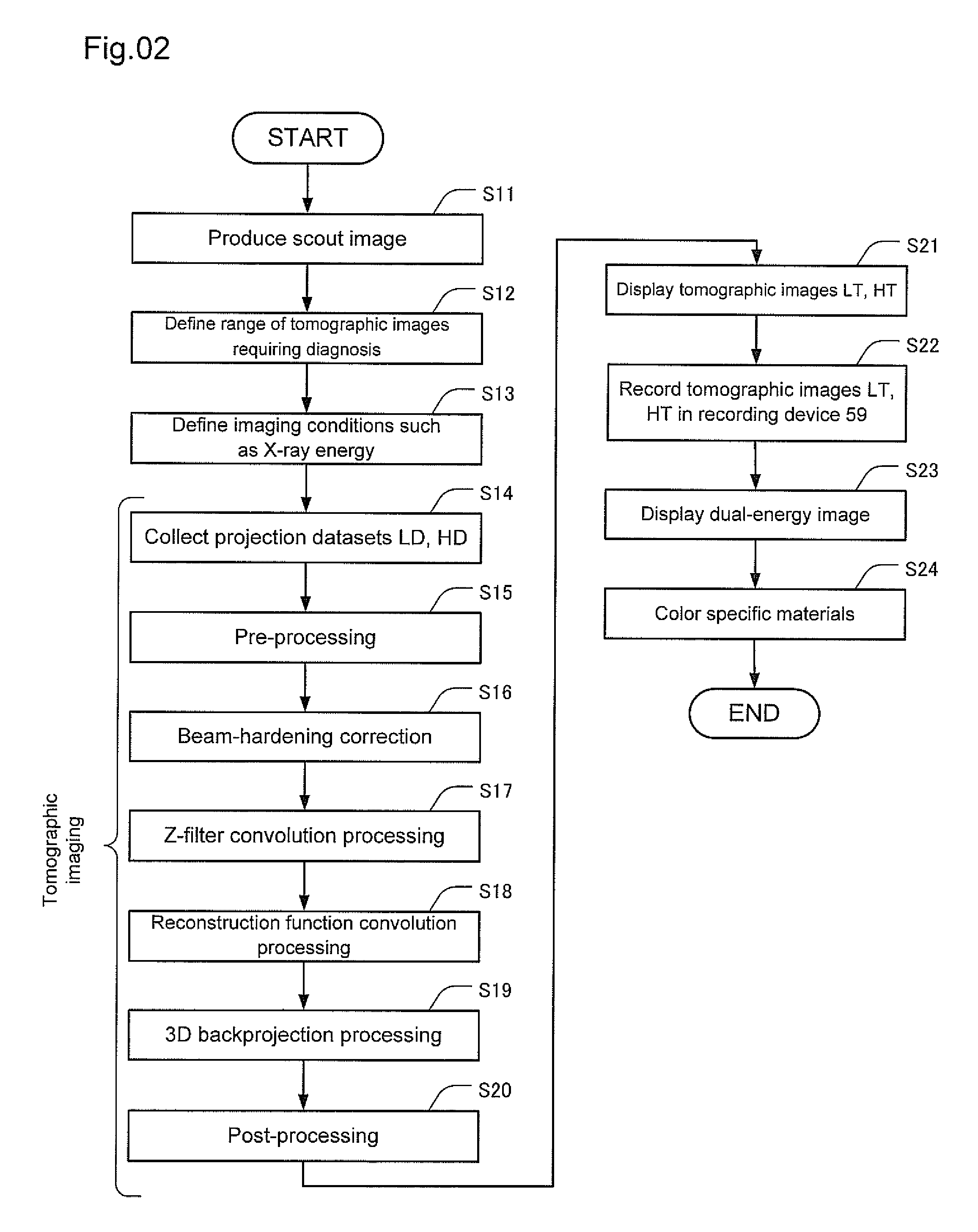X-ray tomographic imaging apparatus
a tomographic imaging and x-ray technology, applied in tomography, instruments, applications, etc., can solve the problems of inaccurate ratios of pixel values, inability to always be constant, and inability to accurately perceive the diagnosis effect, and accurate weighting factors
- Summary
- Abstract
- Description
- Claims
- Application Information
AI Technical Summary
Benefits of technology
Problems solved by technology
Method used
Image
Examples
Embodiment Construction
Configuration of an X-Ray Tomographic Imaging Apparatus.
[0039]FIG. 1 is a block diagram showing the configuration of an X-ray tomographic imaging apparatus (X-ray CT apparatus) 10 in accordance with an embodiment of the present invention. The X-ray tomographic imaging apparatus 10 is provided with a gantry 100, and a table 109 for inserting a subject HB into an imaging region in the gantry 100. The table 109 is moved in a Z-direction, which is a direction of a body axis of the subject HB. The gantry 100 has a rotating ring 102, which comprises an X-ray tube 101 for emitting X-rays of a cone beam shape and a multi-row X-ray detector 103 disposed to face the X-ray tube 101. The X-ray tube 101 is configured to emit X-rays having a high-energy spectrum and those having a low-energy spectrum. The multi-row X-ray detector 103 detects X-rays passing through the subject HB.
[0040]The multi-row X-ray detector 103 is formed of scintillators and photodiodes. The multi-row X-ray detector 103 is ...
PUM
 Login to View More
Login to View More Abstract
Description
Claims
Application Information
 Login to View More
Login to View More - R&D
- Intellectual Property
- Life Sciences
- Materials
- Tech Scout
- Unparalleled Data Quality
- Higher Quality Content
- 60% Fewer Hallucinations
Browse by: Latest US Patents, China's latest patents, Technical Efficacy Thesaurus, Application Domain, Technology Topic, Popular Technical Reports.
© 2025 PatSnap. All rights reserved.Legal|Privacy policy|Modern Slavery Act Transparency Statement|Sitemap|About US| Contact US: help@patsnap.com



